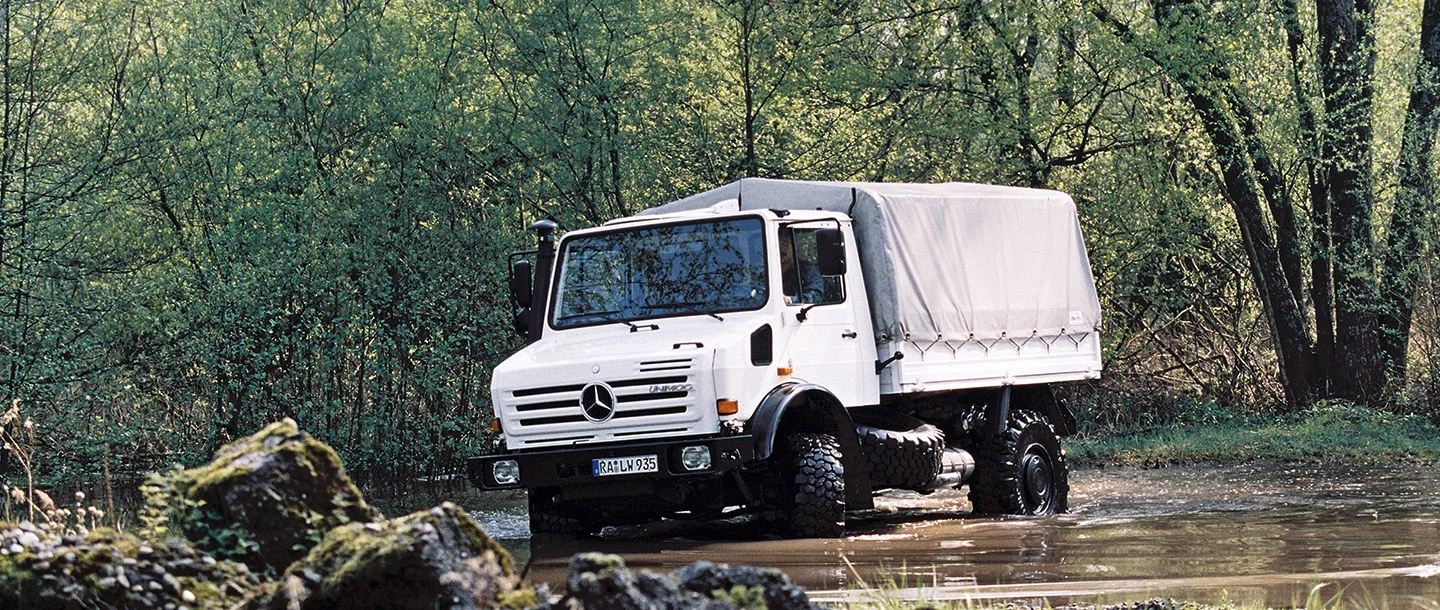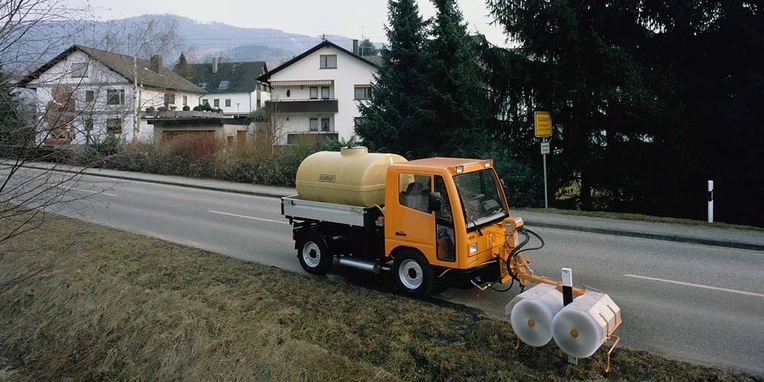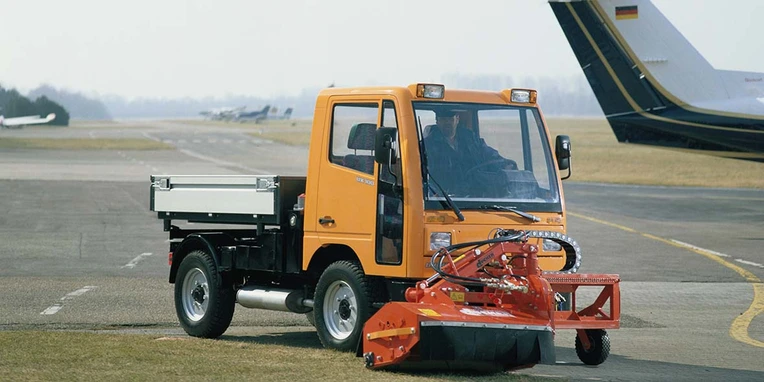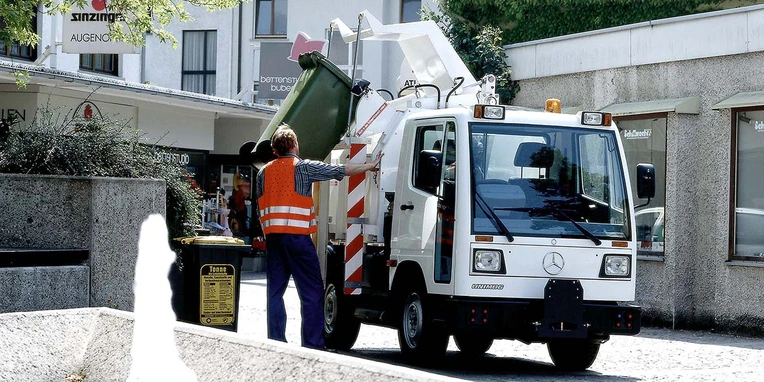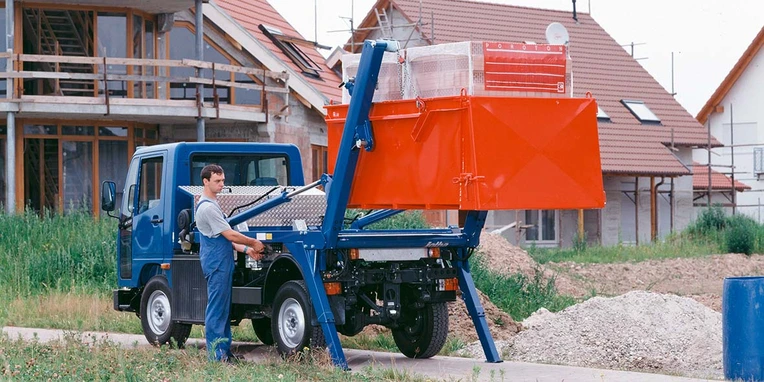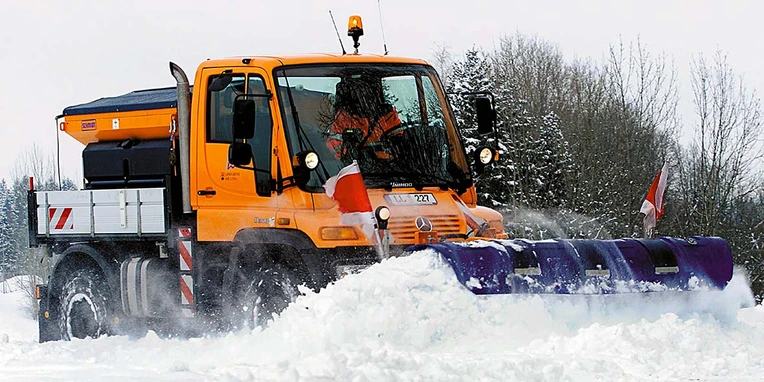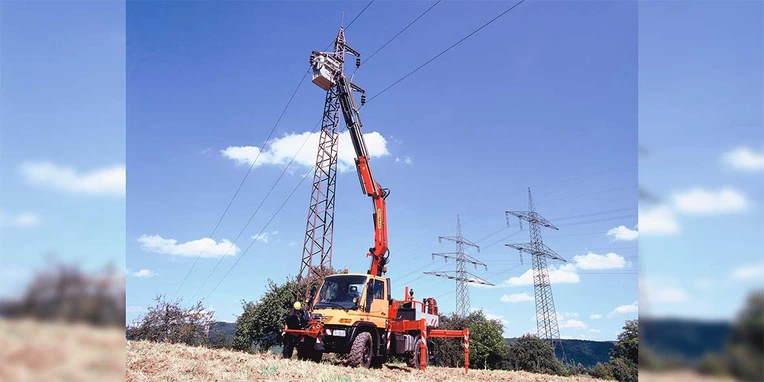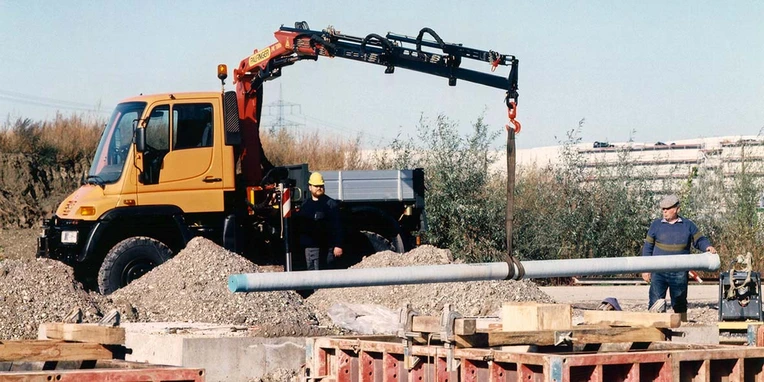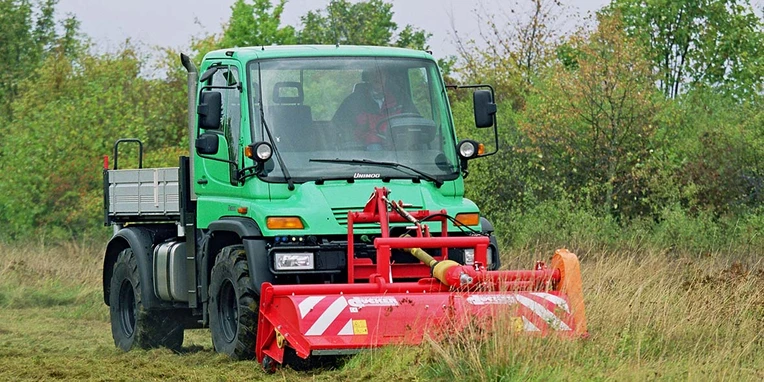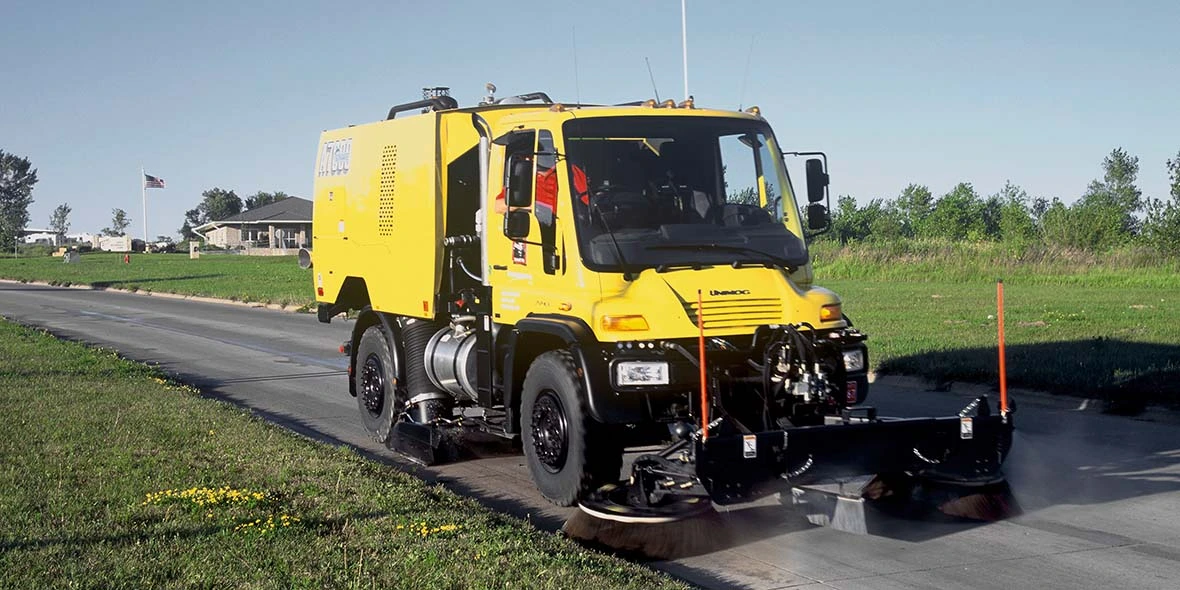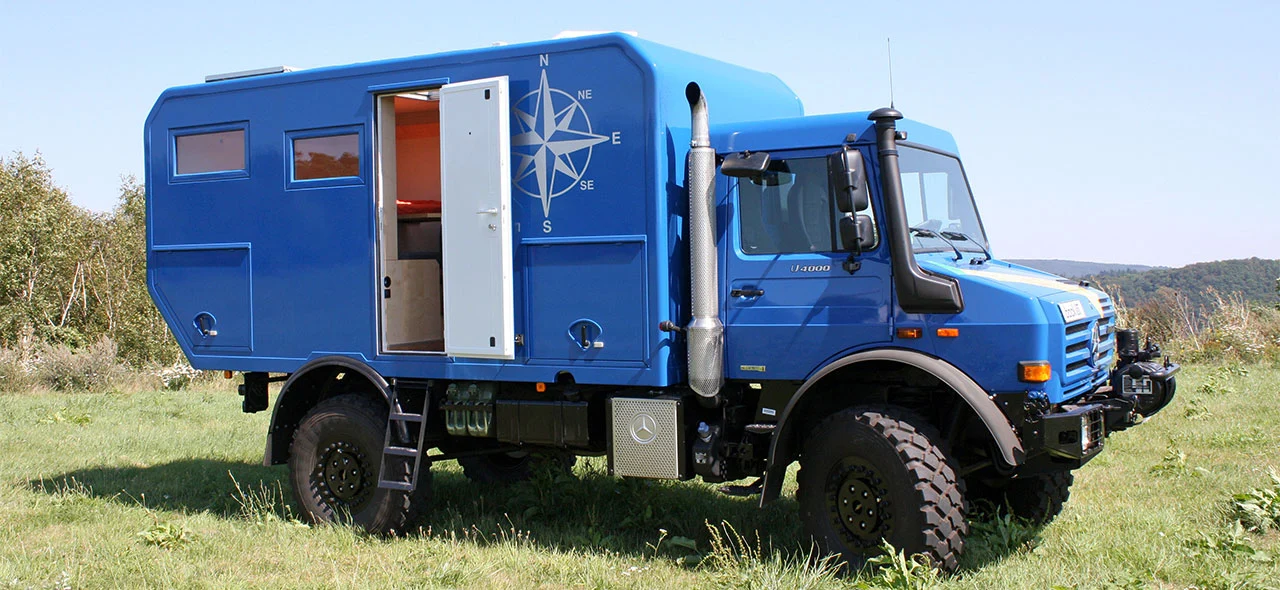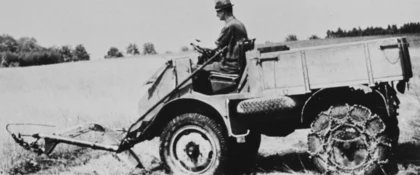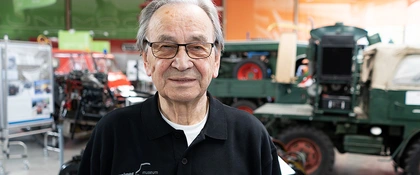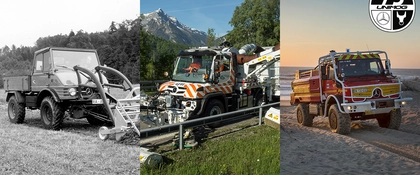1996-2005 | Starting the new millennium with two Unimog series.
The story of Unimog is one in which ingenuity meets innovation, all the while staying true to tried and tested concepts. This is what makes the Mercedes-Benz all-rounder so unique. In Part Six of the History of Unimog, we look back on the most important models and events from around the turn of the millennium.
Greater performance, more environmental protection.
From 1996, Mercedes-Benz increasingly focused on environmentally friendly technologies in the further development of the popular Unimog 408 series. For example, the newly introduced compact Unimog U 90 turbo and the extended Unimog U 100 L turbo with 85 kW not only provided a huge amount of power for the implement carriers but also, for the first time, they were using environmentally friendly engines in accordance with the Euro II standard. To this day, this development has produced more and more efficient diesel engines with significantly reduced emission values.
However, it wasn't just with the engine where environmental protection was gaining significance. Asbestos-free brake pads, biodegradable hydraulic oils and rejecting the use of CFCs and cadmium in Unimog designs continue to contribute to an improved environmental balance and at the same time increase protection for the driver and crew to this day.
